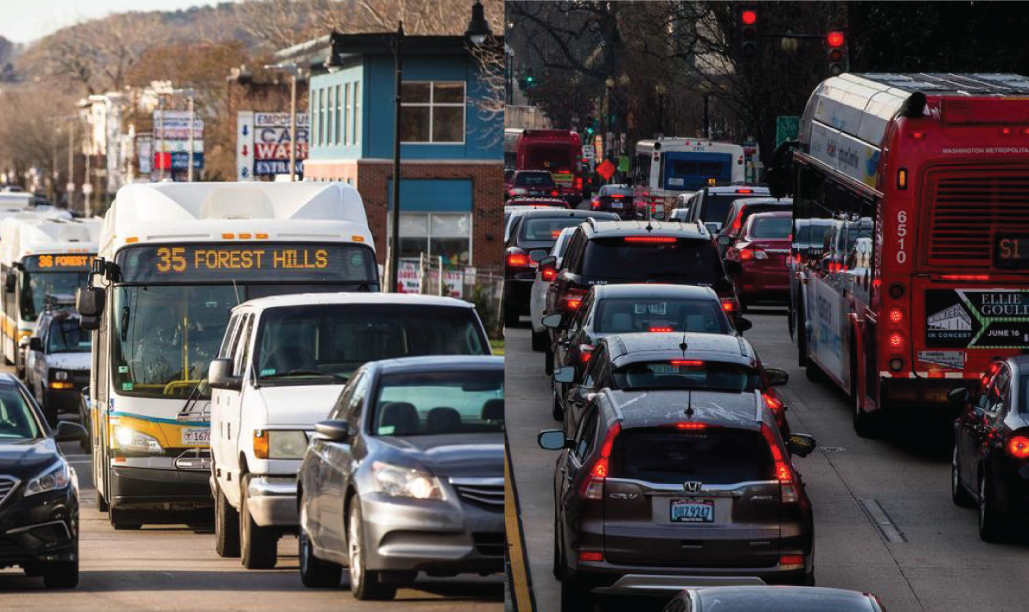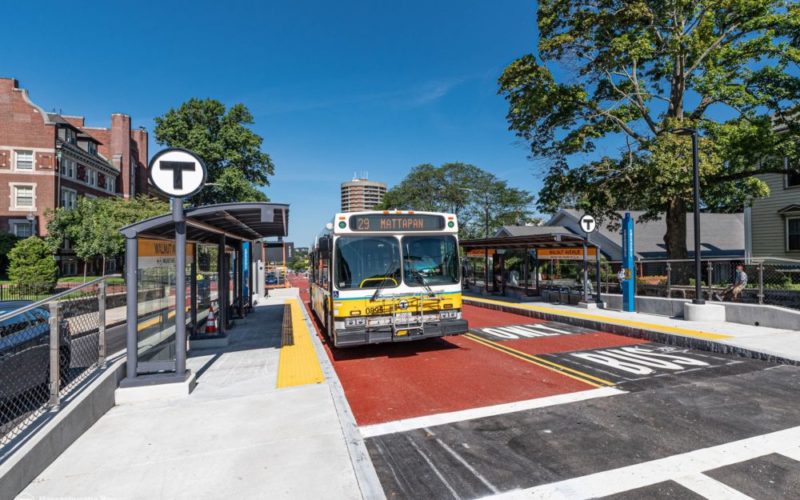
We understand that taking parking or general travel lanes for exclusive bus use is politically hard. But pulling the trigger to implement a new bus lane doesn’t actually get easier by murmuring about it for a few years (or a decade) beforehand.
In stating this, we have in mind two bus lane projects that are sorely needed but lack a clear path to becoming reality. We’re pitting 16th Street in Washington D.C. and Washington Street in Boston’s Roslindale neighborhood against one another in a tortoise-versus-tortoise dead heat.
Which, dear readers, and dear Mayors Bowser and Walsh, will cross the finish line of implementation first?
The idea for bus lanes on Washington’s 16th Street has the longer history of bureaucratic inaction. WMATA and D.C. DOT began to look at ways to improve performance of the routes along 16th Street — S1, S2 and S4 — as early as 2008. A 2009 study recommended transit-only lanes and called for implementation in 2010. A plan-issuance hiatus which saw the introduction of limited stop S9 service along 16th Street ended with another 2013 recommendation by D.C. DOT that transit lanes be installed. 2014’s moveDC two-year action plan followed suit with the same recommendation. That year, WMATA added 60-foot buses and street-level service managers to help with crowding and dispatching along 16th. In 2015, D.C. DOT released yet another “16th Street Transit Priority Planning Study.” It recommends peak-period bus lanes and off-board fare payments, consolidating bus stops and lengthening bus zones. The project appears to be finally ramping toward implementation today, but with various elements being phased in over four years and DOT calling for WMATA to contribute reforms, there is still ample time for the project to bog down or falter again.
The case for a bus lane between Roslindale Square and Forest Hills in Boston laid out in Mayor Walsh’s Boston 2030 plan, released a year ago, is ironclad: “half of motorized roadway users” on the segment are bus passengers. The history of the project does not stretch that far back (though has been considered by the BTD for several years because the congestion delaying buses is so painfully obvious). We raise an eyebrow thanks to the project’s subjection to repeated “pilots” and “tests” with no actual schedule for permanent implementation. Could Washington Street’s longevity in “development” grow to rival 16th Street in Washington, or indeed, the true sloth among bus lane projects, San Francisco’s Geary Street? Mayor Walsh’s announcement today that Boston Transportation Dept. would staff up a new transit unit is great news, but the proof will come with new street designs in the ground. The mayor’s release in fact mentions Washington Street as priority project. Let’s hope it doesn’t see action following a prolonged government hiring process. The hopeful view sees the mayor’s attention as a leg up on D.C.’s 16th Street, and Washington Street in Roslindale bus lane as a great down payment on the ambitious BTD transit lane program to come.
We’re watching, and like Washington and Boston bus riders, waiting.
 On the Brink: Will WMATA’s Progress Be Erased by 2024?
On the Brink: Will WMATA’s Progress Be Erased by 2024?
The experience of being a WMATA rider has substantially improved over the last 18 months, thanks to changes the agency has made like adding off-peak service and simplifying fares. Things are about to get even better with the launch of all-door boarding later this fall, overnight bus service on some lines starting in December, and an ambitious plan to redesign the Metrobus network. But all of this could go away by July 1, 2024.
Read More Announcing the 2021 Frequency Award Winners!
Announcing the 2021 Frequency Award Winners!
TransitCenter’s annual Frequency Awards recognize outstanding work in the transit field. Here are the 2021 honorees...
Read More